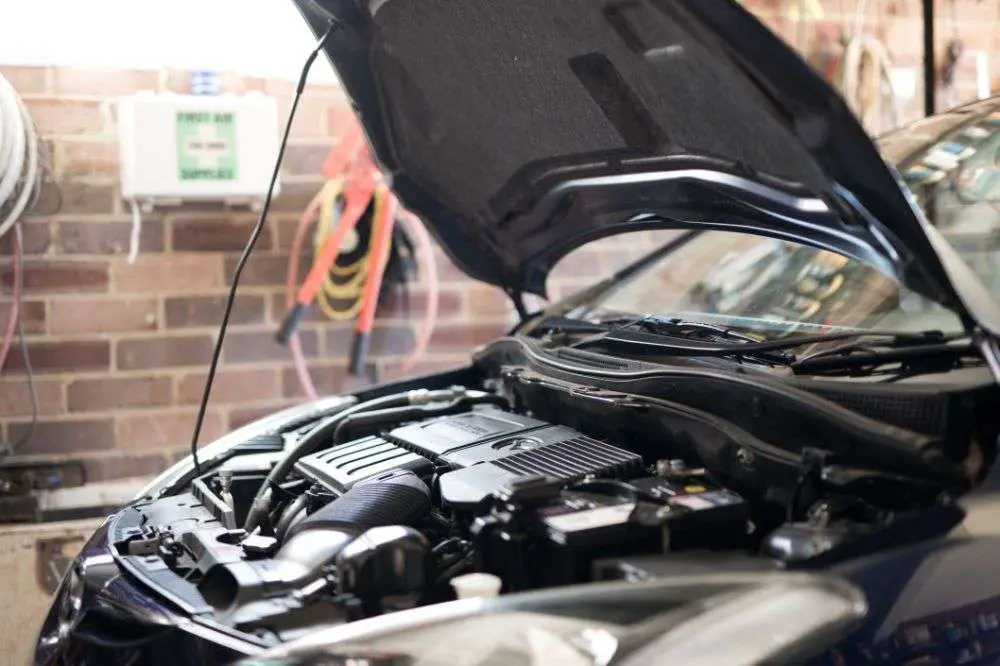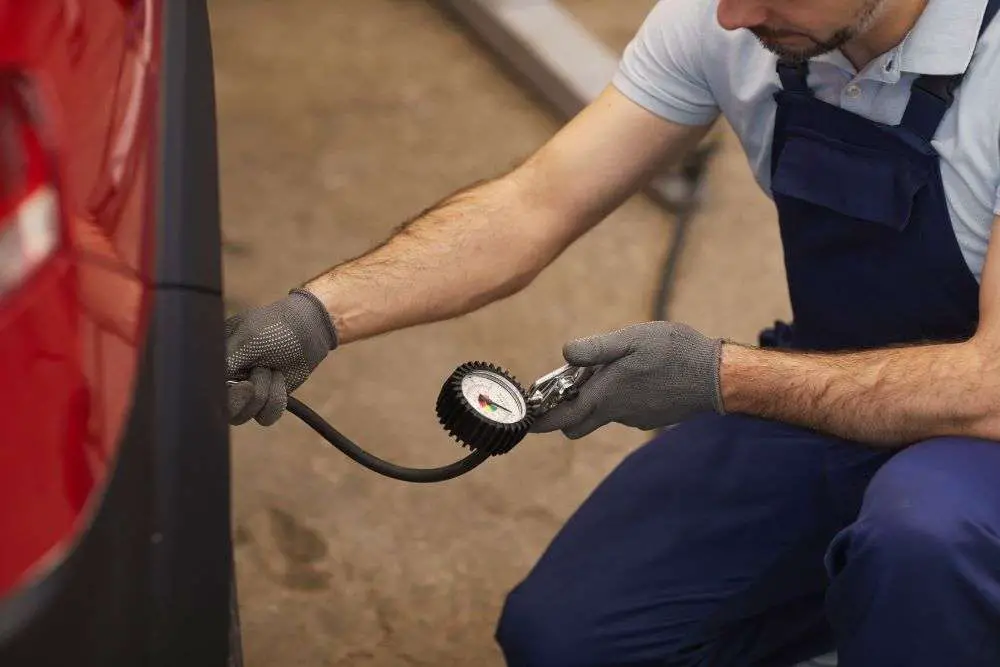If you have been driving for a while and suddenly the Check Engine Light starts flashing, it’s important to know what this means. In some cases, the Check Engine Light may be flashing because of a problem with your vehicle that is not easily detected.
For many drivers, engine light flashing when accelerating is a fairly common problem. This can be the result of a few different causes and in this blog post, we will discuss some potential reasons for engine light flashing when accelerating.
Why Is My Check Engine Light Flashing or Blinking?
The Check Engine Light is your car’s way of warning you about a major problem with the fuel or emissions systems, so it’s critical to know what that flashing symbol means. It can also indicate problems with other vehicle components, including battery failure and low tire pressure.
Your check engine light is usually accompanied by an indication on the speedometer that informs you if there are any issues with one system or several. If this signal appears suddenly while driving somewhere new, consider restarting your vehicle before forming hasty judgments.
Because this is a mechanical device, certain environmental elements, such as static electricity from vehicles parked nearby or strong bass lines playing through speakers near sensors under the hood, can cause it to malfunction. Take note of which symbols display up in order for more individualized service.

Find the root cause of the Check Engine Light Flashing
If the engine shuts off by itself while you’re driving or if an indication appears that something is wrong, pull over and have someone call for help to avoid clogging traffic in the event of an emergency.
And when the “check engine” light on your dashboard begins to flash, it’s time for a closer inspection of what may be wrong with the vehicle.
One of the most useful things you can do if your engine light is flashing or blinking while driving is to pull over and check any current error messages with a manual or Google search. This is especially significant if no indicator on your dashboard indicates which system needs attention at this moment.
What to look for when your Check Engine Light is flashing?
When something goes wrong with your car, the Check Engine Light turns on. The light is called a Malfunction Indicator Light or MIL for short. This light goes on when something goes wrong in this complicated network of components and sensors.
The check engine light does not necessarily indicate an impending problem. If the light stays on, it’s time to take action (don’t freak out!), take note of a few things:
- Is your vehicle behaving differently than usual?
- Is it bucking, surging, or making unusual noises?
If you detect nothing out of the ordinary, you can continue driving to your local automobile dealership or repair shop for an inspection.
Quick Tip: When you start the car, the check engine light always comes on. But if no problems are detected, it should turn off within 6 seconds.

Common Causes of the Check Engine Light Flashing
When you see your check engine light blinking or flashing, it means that there is a problem with your car and you should take it to a mechanic. It could be something simple like adding oil to the car, but it could also be something more complicated like needing new spark plugs.
There can be a variety of causes for this noise, and these might range from minor to major. Before they become large problems, look into what might be causing these little difficulties. The check engine light flashing is common because of:
The gas cap is loose or faulty
If your gas cap is cracked, faulty, or loose, the gas in your car might leak out. This can cause your engine to stop working right. It could be a more serious problem with the upper part of the fuel system.
If you still have the problem, check if there is a gas leak. Check to see if you can tighten or replace the gas cap after that. The check engine light should turn off after driving for a while. If it doesn’t, it might be time to get your mechanic’s advice.
Faulty Catalytic Converter
The exhaust system in your automobile has a catalytic converter, which reduces emissions. It transforms carbon monoxide and other noxious fumes into less harmful by-products.
A catalytic converter, which is usually a pricey automobile component costing around $500-$1,000 each, is required in most cars. Some vehicles even have four of them! If they go bad, you’ll have to spend more on gas and your vehicle’s performance will suffer.
Faulty Charging System
The battery might not be the only thing that’s wrong with your car. It could also have an alternator or some other electrical component failing to charge properly, which will result in a dead engine!
Make sure you keep an eye on this area so that the charging system isn’t affected by any issues.
Mass Airflow Sensor
The mass air flow sensor measures the air coming into your engine. This is to make sure there is enough air for fuel. Without enough air, your car will not start or it might stall.
If the airflow sensor stops working, then the computer will get a signal that there is a problem with the airflow sensor in your engine. leading the Check Engine light to come on.
The engine not warmed up
It’s possible that the automobile is just taking some time to turn on and begin functioning after being shut all day. The engine may simply need to be warmed up before driving if this is the case.
If you turn on the engine and see your Check Engine Light blinking, try driving at 90 km or 55 mph for about 15 minutes. This will warm up your car’s sensors faster than just cranking it over!
A Check Engine light that remains on while driving is also common. If your Check Engine light is on but blinking, consult your car’s owner’s handbook for advice or go to the dealership for expert assistance on what’s wrong with your car.
Faulty oxygen sensor
The oxygen sensor is a component that gets its readings from the levels of oxygen in the engine’s exhaust. If there are low levels of oxygen, then the Check-Engine Light will flash.
There are many reasons why this can happen, one of which is problems with the O2 Sensor itself. If you notice a Check Engine Light flashing on your dashboard, make sure to get it checked out by a professional.
Worn-out spark plugs
Do you take your car to the mechanic when it needs a check-up? If not, then bad or failing spark plugs could be why your car’s engine light is on. Take it to a certified mechanic right away.
Faulty ignition coils
The Ignition Coil is a part of your vehicle’s ignition system. It converts the voltage to the needed volts so that it can trigger the spark plug to ignite the engine’s air-fuel mixture.
When the ignition coil is bad, your check engine light will turn on. If you need to replace it, make sure you get the entire system checked by someone who knows what they are doing.

What does the Check Engine Light Status Mean?
A Check Engine Light could come on for a variety of reasons. It should be investigated and resolved, whether it’s a minor issue like a missing gas cap or a more serious one like a failed catalytic converter. Let’s take a closer look at what each of the light statuses means:
Flashing Check Engine Light
The general rule is that if the check engine light is on, you shouldn’t drive the vehicle any farther. It’s an emergency situation. It’s frequently caused by a faulty spark plug or ignition coil.
If you keep driving, you will likely cause irreversible damage. It is best to have your car towed to a certified mechanic for repair.
The Check Engine Light Stays On
If the check engine light does not go off after a few minutes, you can drive. However, only if the vehicle’s critical systems such as brakes and lights are working. Keep an eye on your vehicle’s warning lights, including the coolant temperature and oil pressure, on the dashboard.
Quick Tip: If the problem is serious, do not ignore it. For a thorough analysis and repair, get your automobile to a certified expert as soon as feasible.
Can I Drive with the Check Engine Light Blinking?
Can you drive with the check engine light blinking? The answer is yes, but only for a limited amount of time and under certain conditions.
If your check engine light blinks once per second, it usually means that there is a problem with your car. It could be low on gas or have run out of oil.
However, in most situations, as long as you’re driving normally and nothing appears wrong, you should be able to drive short distances at moderate speeds.

Steps to check why the engine light is flashing?
So where should we start looking for the problem now that we know what might be causing it?
When your check engine light is on or blinking, the car will store a trouble code in the memory, allowing you or a trained technician to view what was producing the problem whenever your check engine light comes on or blinks.;
Check the other Lights
You should check your gauges and lights to see if there are any signs of low oil pressure or overheating. If you see these, stop the car and turn it off as soon as you can.
Try tightening your gas cap
Some cars have a distinct warning light for a loose gas cap, which alerts drivers before the condition produces the check engine light. The problem generally goes away after you tighten the gas cap on a regular basis. Keep in mind that it may take several tries to reset the light.;
Slow down and lighten the load
If your check engine light comes on or you experience any significant driving difficulties, such as a severe loss of power, slow down and try to reduce the strain on the motor.
It’s probably a good idea to pull over and park your car while towing a caravan. As soon as possible, have the vehicle inspected to avoid costly damage.
Learn from the Error code
Using a diagnostic scanner is a more efficient approach than using the dash-mounted display to check what the engine error code is attempting to tell you.
You may think that a diagnostic scanner is too expensive for this small problem. Your local repair shop should be able to read the codes and figure them out for you.
After you get the engine’s error codes, the technician can look up to see what is not working.
It’s a terrible idea to guess which parts might be causing the check engine light and start replacing components without conducting any research. In almost every case, this will just result in you spending your money for nothing.
Quick Tip: The Check Engine light is not the same as the maintenance reminder or service interval warning. When a required service is due, these lights come on and are generally caused by distance travelled, the amount of fuel used, or some other form of vehicle usage tracking.

Can the Engine Light turn off by itself?
The Check Engine Light will go out when the error codes from your car’s computer are fixed and deleted from its memory, as long as there are no further failures that would cause the light to come back on and generate an error code.
Otherwise, it will stay on until the underlying problem is resolved.
Can I stop the check engine light from coming on?
Preventing problems like this does not come naturally to everyone, but it’s something that should be practiced. Try being proactive by addressing minor concerns before they result in major issues (for example, changing the engine oil regularly).
By conducting regular maintenance on your vehicle, you can prevent the check engine light from coming on. Because each automobile has its own set of quirks that need special care, you should always get more information about what’s appropriate for your car from a professional.
If these measures fail to correct the problem or a new problem is discovered, take your car to an automobile shop for inspection; there may be an underlying issue with one of the components that will necessitate expert assistance and potentially costly repairs down the road otherwise!

Can I ignore the flashing Check Engine light?
It is possible to ignore the Check Engine light, but doing so is extremely irresponsible. The Check Engine Light may be indicating a problem with one of your vehicle’s major mechanisms or components – an issue that could cost you much more money if ignored!
It’s important to understand that if you ignore the Check Engine light, it will likely turn into an even more serious problem down the road.
The Check Engine light may be warning you about a variety of things, from a loose gas cap or low oil pressure to bad spark plugs or transmission problems. Ignoring it could produce costly repairs in the future. Here are a few examples:
- A coolant temperature sensor malfunction, for example, might cause your engine to over-fuel.
- Leave a cylinder head valve problem unsolved and you risk affecting cylinder head valves as well as other components.
- A catalytic converter can be ruined if too much unburned fuel enters the exhaust system.
It’s also worth noting that by turning off your Check Engine light you run the risk of damaging critical parts in your vehicle – which will only worsen its condition and cost more.

Is There a Connection Between the Check Engine Light and Low Oil?
Some people think that if the car is running low on oil, then the light will be on. This is not always true. The light can turn on for a different reason, but it is important to know that this does not usually happen.
If you’re running low on oil, the oil light in your dashboard will come on, but it won’t change the check engine light. The oil light looks like a leaking pot of oil. If the indicator illuminates, this might suggest that your car requires more oil.
How much could the cost be to fix it?
Flashing check engine lights is an indication that something isn’t operating properly in your vehicle’s computer system.
The cost of repairing this issue can differ greatly, depending on the reason for it, and it’s difficult to predict how much something will cost until you’re confronted with it.
Here’s what the cost generally looks like:
- It should cost between $50 and $100 to replace the spark plugs or engine filters if you do it yourself. Hiring someone else to perform this task might end up costing more than doing it yourself since a mechanic will be needed.
- It’s possible that the issue is due to a faulty engine sensor or ignition coil, which might be more expensive to repair. Engine sensors, such as mass airflow sensors, ignition coils, or camshaft position sensors, can cost hundreds of dollars to replace. If it’s a luxury vehicle, the cost may be much higher.
- Repairs to a turbocharger, EGR valves, fuel injectors, and fuel pumps may range from $200 to $800 depending on the severity of the fault (if a component needs to be replaced) and the amount of labour needed.
Conclusion
If you see the check engine light flashing, it’s critical to have your automobile serviced as soon as possible. By understanding what causes this warning light to come on, you can prevent expensive repairs and keep yourself safer on the road.
A gas cap that isn’t properly secured or an exhaust leak are two of the most common causes. If you have a check engine light on and your vehicle is not inspected as soon as possible, any issues might get worse before they can be fixed. Please leave a comment below!


Thank you this was a good thought k have learnt.